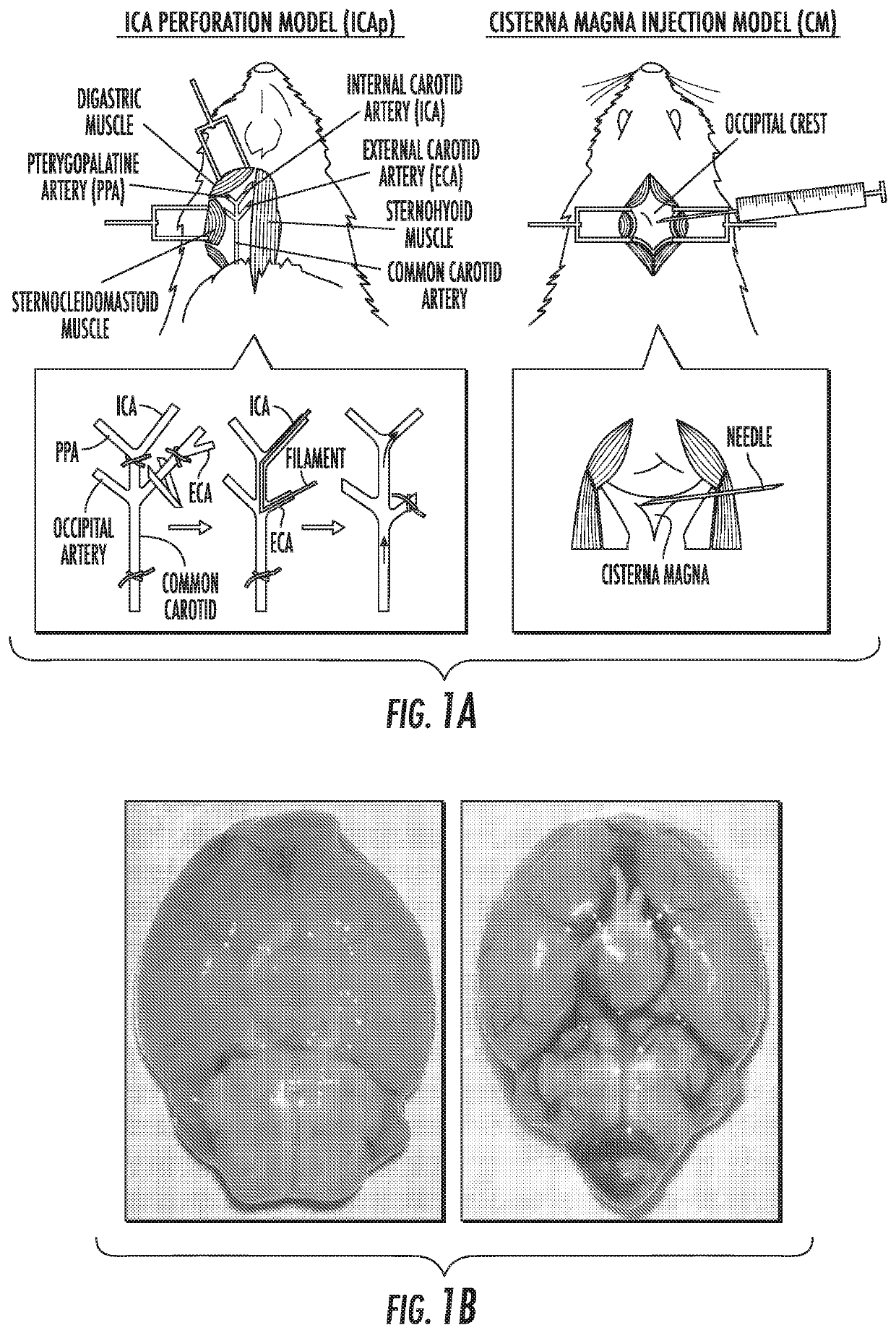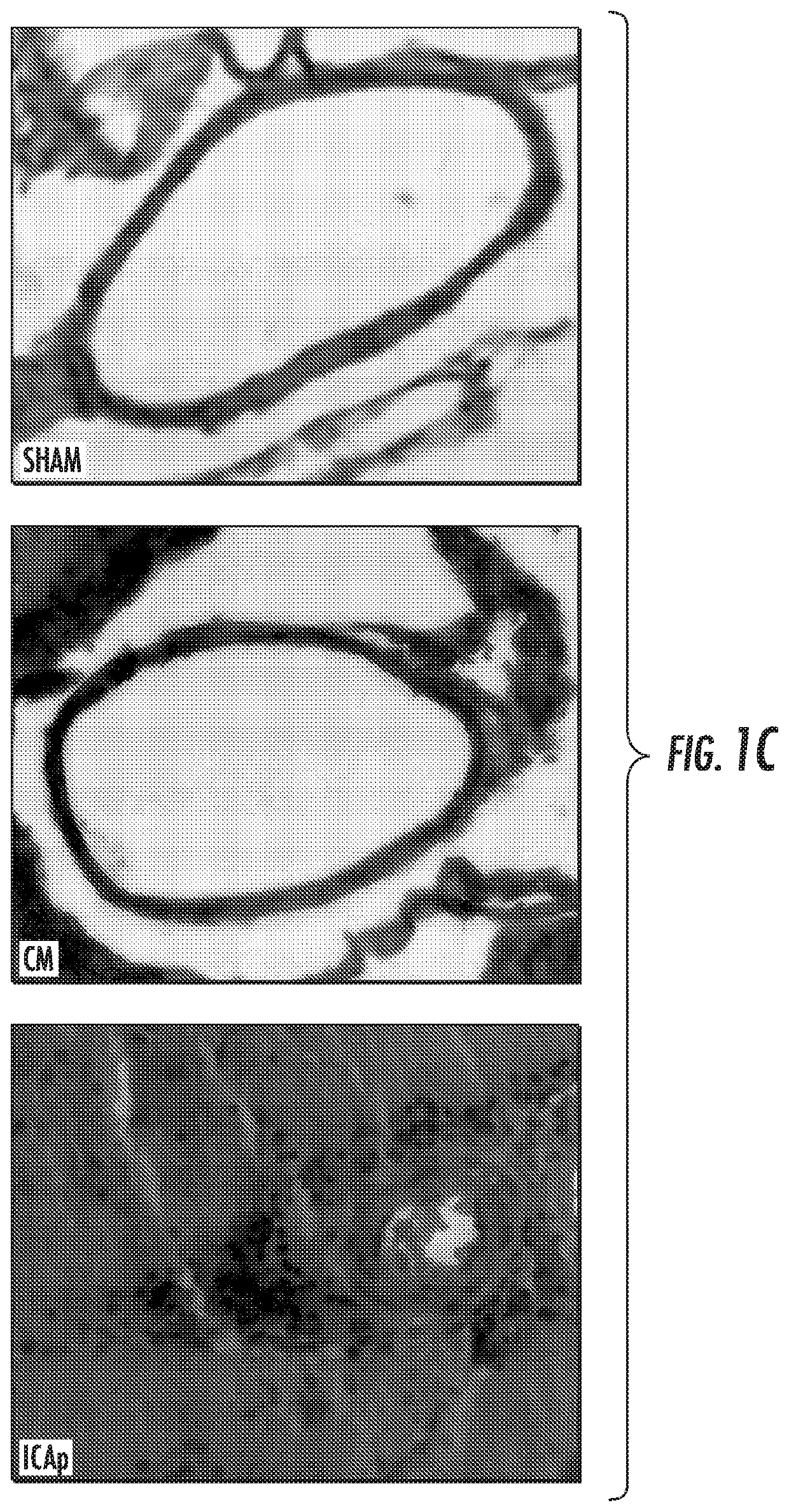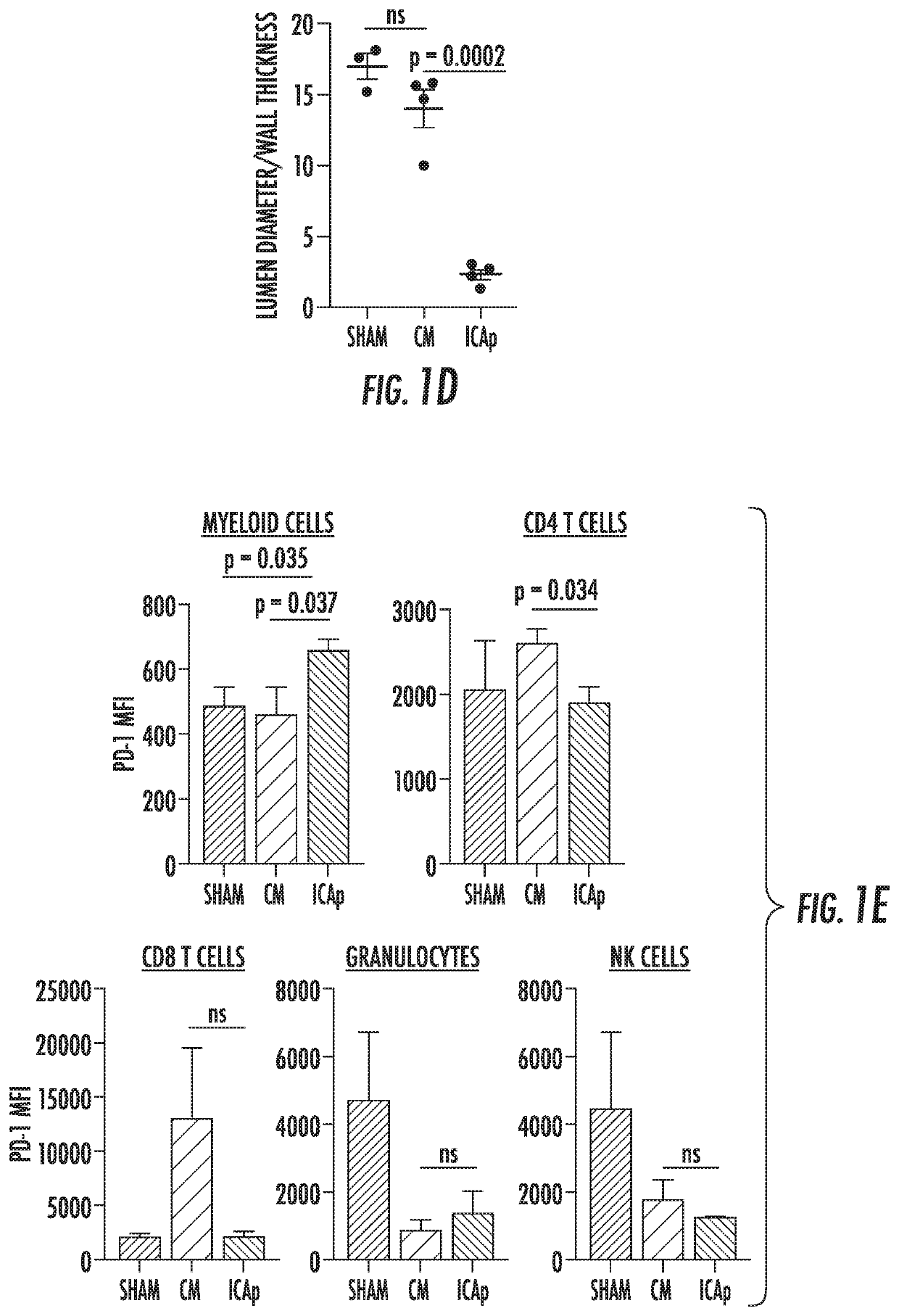Compositions and methods for treating cerebral vasospasm
- Summary
- Abstract
- Description
- Claims
- Application Information
AI Technical Summary
Benefits of technology
Problems solved by technology
Method used
Image
Examples
example 1
ocytes Mediate Cerebral Vasospasm Following Subarachnoid Hemorrhage
[0034]Summary: Aneurysmal subarachnoid hemorrhage (aSAH) accounts for 5% of strokes, but disproportionately contributes to stroke-related morbidity and mortality.1 Following aneurysm rupture, radiographic cerebral vasospasm is detected in 70% of patients and 20% develop delayed cerebral ischemia (DCI)2 The frequency and severity of cerebral vasospasm correlates with hemorrhage volume3 and has been linked to aberrant inflammation.4 The precise mechanisms of the underlying inflammatory process, however, are unknown. Here the present inventors show that Programmed Death-1-expressing (PD-1+) monocytes are mediators of cerebral vasospasm following aSAH. The present inventors found that inflammatory PD-1+, Ly6c+, CCR2+ monocytes were released from the bone marrow and entered the peripheral blood in a catecholamine-dependent manner in an animal model of cerebral vasospasm. PD-1+ monocytes were also detected in the periphera...
example 2
ession on Monocytes as a Biomarker of Pathologic Central
[0086]nervous system inflammation. Using a mouse model of intracranial hemorrhage and vasospasm (endovascular perforation), the present inventors have shown that administration of soluble PD-L1 reduces perivascular inflammation and prevents cerebral vasospasm. This effect is abrogated by pretreatment with PD-1 blocking antibodies, which are commonly used in cancer immunotherapy, validating that PD-1, which is the only known ligand of PD-L1, is the mediator of this effect (FIG. 4A-4B).
[0087]The present inventors have discovered that PD-1 expression on CD45+, CD11 b+, CDIIb+, CD3−, CD15−, CD19− cells (monocytes) in the peripheral blood is elevated in patients with aneurysmal subarachnoid hemorrhage (aSAH) compared with normal controls. Importantly, cerebral vasospasm is preceded by a roughly 10-fold increase in the percent of monocytes expressing PD-1 (FIG. 11). The present inventors envision this discovery being translated clini...
PUM
| Property | Measurement | Unit |
|---|---|---|
| Solubility (mass) | aaaaa | aaaaa |
Abstract
Description
Claims
Application Information
 Login to View More
Login to View More - R&D
- Intellectual Property
- Life Sciences
- Materials
- Tech Scout
- Unparalleled Data Quality
- Higher Quality Content
- 60% Fewer Hallucinations
Browse by: Latest US Patents, China's latest patents, Technical Efficacy Thesaurus, Application Domain, Technology Topic, Popular Technical Reports.
© 2025 PatSnap. All rights reserved.Legal|Privacy policy|Modern Slavery Act Transparency Statement|Sitemap|About US| Contact US: help@patsnap.com



